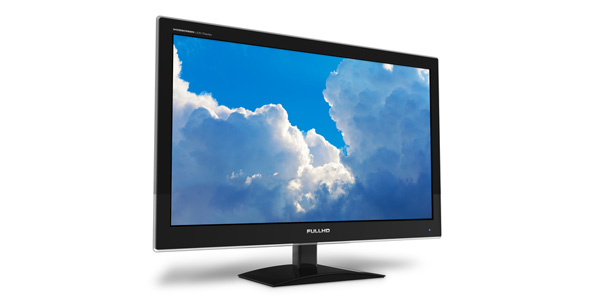In monitor technology, LCD was considered a breakthrough compared to the older CRT implementation. However, early implementations or LCD was available in forms of calculators, watches and other simple electronic devices. Eventually, the technology is mature enough to replace CRT technology, which is much bigger and bulkier, due to the use of tubes and other large electronic components. Each pixel in LCD screen is represented by individual cell and this result in sleeker and slimmer monitor. LCD display is known to be quite efficient and it doesn’t require large amount of electricity. Smaller LCD screens, like those on laptops could also run with battery power. It is clear that LCD technology is versatile and can be implemented on many different devices, both portable and non-portable.
LCD monitors are known for their distinctive pixel arrays and this configuration will determine the actual screen resolution of LCD monitors. The display resolution will determine how sharp the monitor will display objects on the screen. Some LCD monitors could have similar display size, but a few of them may have smaller pixels, which results in higher resolution and better image representations. It should be noted that showing content with different resolution than the native display resolution could cause extrapolation. In this case, users could see that the content it displayed on small portion of the display. Content can be stretched to match the width or height of the display, but this will degrade the quality of the content and users may need to watch the content from farther distance, so the content will look better.
The advantages of owning LCD monitors generally outweigh the drawbacks. LCD monitors generate less radiation compared to CRT monitors and there’s no excess heat on the backside. LCD monitors are also easy on the eyes, because they are less straining and stressful. CRT monitors contain phosphorus and prolonged pauses of displaying highly contrasting objects could cause permanent image burns. Aside of their stylish and modern looks, LCD can be very easy on the budget with their low pricing. When purchasing LCD monitors, we should look those that are suitable for our requirements in terms of screen resolution. Huge widescreen monitors may look great, but we should check whether they could open websites and other content properly. Large display with lower resolution could result in less than impressive representations.
When purchasing LCD monitor, we should unleash a barrage of question to sellers and we may write down any question that we have. Many people are replacing their older LCD models with newer, larger one; especially those with additional features. LCD monitors should be affordable, especially those that are smaller than 21-inch in diameter. It may actually cost the same with when we first purchased CRT monitors. It is clear that owning a LCD monitor can be a money saving decision and we should be able to quite a value for our money. There are amazing features of LCD monitors and we should take advantage of them.










Comments are closed.